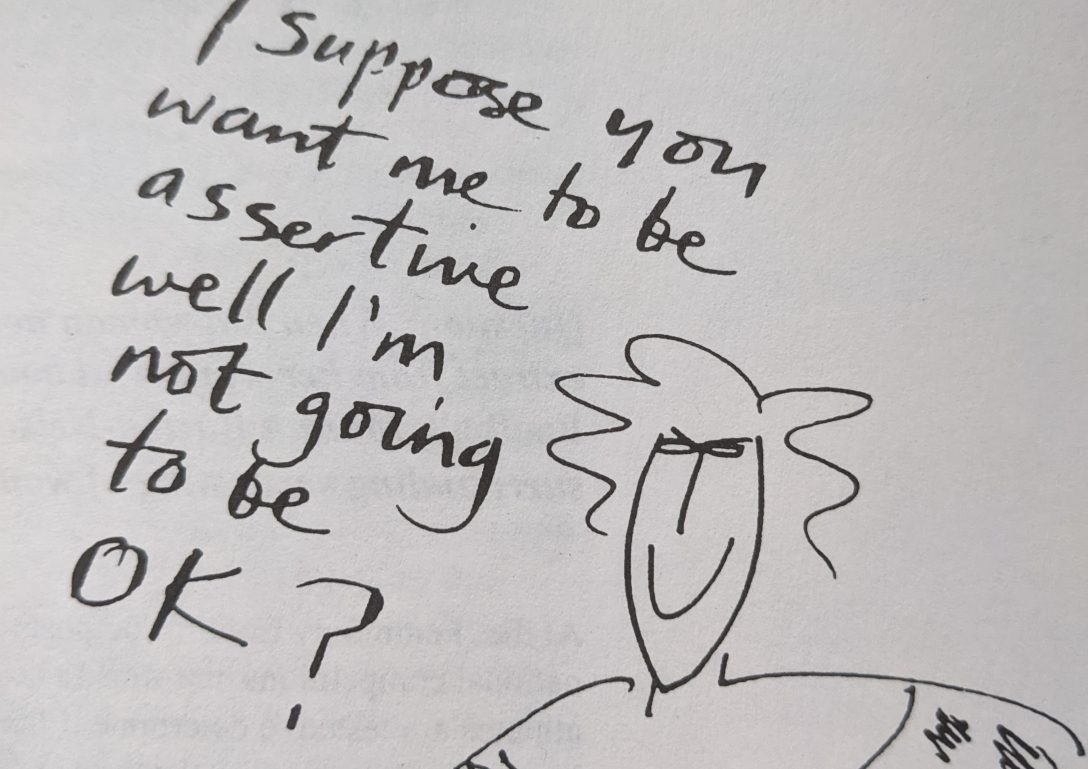The male members-only Garrick Club was in the news last month after The Guardian got hold of its membership list. This revealed that a lot of men who claim to be staunch supporters of women in their day-jobs running big companies or the civil service have nevertheless shelled out large sums of money to join a club which does not allow women to be members.
Elite male institutions like the Garrick Club are bastions of “fratriarchy”, the modern form of male power which is exercised less through top-down formal structures and more through the fraternal bonds men form with other men of similar status. But the exclusion of women has never been just a ruling class thing. A hundred years ago Freemasonry, and in the US “fraternal orders” (the Elk, the Moose, the Eagles, etc.) played an important role in the lives of non-elite middle-class men; 50 years ago when I was young, British working men’s [sic] clubs, and even some pubs, enforced a “no unaccompanied women” rule. What is it that impels men, from high court judges to car assembly line workers, to seek out these all-male spaces?
Some commentators on the Garrick affair suggested that the answer might be partly to do with language. The evolutionary psychologist Robin Dunbar told the Financial Times that men and women socialize differently: men bond by participating in shared activities, whereas women bond through friendships which are sustained by talk. Men can go to a club to read the newspapers in peace, knowing no one will be offended if they prefer silence to idle chat. Other commentators pointed out that men’s talk is different from mixed-sex talk: it’s the kind of talk that comes most easily to men, the kind that allows them to relax and “be themselves”. Some added that the same applied to women and all-female talk. If men sometimes sought out spaces where they could talk among themselves, that was not necessarily because they were hostile to women: it was simply an expression of the “natural” desire to spend time in the company of other men.
This argument raises obvious questions. Is it true that single-sex talk differs from mixed-sex talk (and that the all-male version differs from the all-female one)? Is there anything to the idea that men and women can be more “naturally” or more “authentically” themselves when interacting with people of their own sex? In fact, these are not new questions: though for various reasons they’ve fallen out of favour, in the 1980s and 1990s they were hotly debated among researchers of language and gender.
In the early years of language and gender research many empirical studies focused on mixed-sex talk: the main question they investigated was how social inequality between men and women played out at the micro-level of ordinary conversation. These studies uncovered a number of common patterns which are still (depressingly) common today–for instance, that men in mixed groups talk more than women, and that women do the “interactional shitwork” of providing support for men’s contributions. But by the 1980s some researchers were arguing that talk in single sex groups had been neglected. Studying same-sex conversations, they suggested, would show how men and women talk when power differences are not a factor, and they are free to follow their own preferences. Though these researchers didn’t use words like “natural” and “authentic”, the implication was that single-sex talk is, in some sense, the default case.
If we take the long view, it’s probably true that single-sex talk was the commonest form of talk experienced by most people in most societies for most of history. This follows from the fact that most societies have historically allocated different tasks and occupational roles to men and women, and many have also practised formal or informal sex-segregation in non-work (e.g., religious, political and social) settings. That was certainly true of the community I grew up in 50-odd years ago: not only did men and women do different kinds of work, a lot of their socializing was also done separately. Even at notionally mixed gatherings, from large occasions like weddings to small parties in someone’s house, it was completely normal for the men and women present to split almost immediately into single-sex groups which then engaged in separate conversations.
Though younger women like me found this annoying, older women would say, if asked, that it was what they themselves preferred. Once I asked my great-aunt, whose husband was very active in his local masonic lodge, if it bothered her that he spent so much time doing something she couldn’t be involved in, or even know about. She rolled her eyes. “Of course I know about it”, she said, “and I can tell you, no woman on god’s earth would want anything to do with it”. Men had a similarly negative view of women’s talk: I sometimes wondered if there was an actual law decreeing that any man who entered a room in which two or more women were conversing must say either “sorry to interrupt your gossip, ladies” or “what’s this, then, a mothers’ meeting?”
By the 1980s these attitudes were seen as old-fashioned, but since there was still a fairly high degree of segregation in the labour market, and people still tended to have more close friends of their own sex, single-sex talk continued to play a significant role in everyday life. And researchers who studied it generally agreed that there was an overarching difference between the male and female varieties. Whereas men’s talk was competitive and status-oriented, women’s talk was co-operative and egalitarian. Jen Coates, for instance, who analysed talk in both all-female and all-male friendship groups, reported that women developed topics collaboratively, and rarely observed the norm that only one speaker speaks at a time: compared to men they produced more simultaneous speech and more supportive interventions (like questions, brief comments and minimal responses).
Some researchers related these patterns to what people learn about language-use in the formative years of childhood, when it’s typical for them to play in same-sex groups. Boys’ groups tend to be larger, to have a clear hierarchy and to favour physically active games with fixed rules; girls’ groups are smaller, more egalitarian and more focused on imaginative play. These differences, it was argued, develop different ways of talking. Playing in a boys’ group teaches you to compete for status, to give and take orders and to argue when conflicts occur. Playing in a girls’ group teaches you to share, to negotiate and to avoid open conflict.
Some also argued (though this was more contentious) that the differences between boys’ and girls’ talk might explain not only the patterns observed in adult single-sex groups, but also the ones that had been found in mixed-sex talk. Perhaps what was going on in mixed-sex conversations wasn’t men exerting power over women, it was simply a clash between the styles men and women independently preferred. If the outcome favoured men, that was not because men were deliberately trying to dominate, but because speakers who’ve learned to compete for airtime, or deal with conflicts by arguing their point, are always going to win out over speakers who shy away from competition and back down in response to conflict. Both sexes, according to this argument, were just taking the habits they’d learned in single-sex groups into their interactions with the other sex, without realizing that the other sex did things differently. The unfortunate—but unintended—consequence was “male-female miscommunication”, a phenomenon analogous to the kind of misunderstanding that can arise between speakers from different cultures.
Some readers will recognize what I’ve just said as a précis of the argument made by Deborah Tannen in her 1990 book You Just Don’t Understand. This book was controversial among language and gender researchers: many found Tannen’s generalizations too sweeping, while some found the analogy she made between cross-sex and cross-cultural communication disingenuous, glossing over the power difference between men and women. But in the wider world it was hugely influential. Not only was it a bestseller itself, in 1992 its ideas were repackaged in John Gray’s Men are from Mars, Women are from Venus, which went on to sell 15 million copies. By the early noughties its account of male and female communication styles was also being repeated in a new wave of popular science books with titles like Why Men Don’t Iron: The Fascinating and Unalterable Differences Between the Sexes, which argued that the differences were “hard wired” in the human brain.
Tannen herself was neither a biological determinist nor an anti-feminist, but these noughties books had a clear anti-feminist agenda. Feminism, they were saying, had got it wrong: men and women were different by nature, and it was time we went back to organizing society in a way that reflected their “unalterable differences”. This literature had undertones of the “aggrieved male entitlement” which would later be expressed more openly by the misogynists of the online manosphere: it was obsessed with the idea that feminism had turned men into emasculated shadows of their former selves. Language featured prominently in that story: boys and men, it was claimed, were no longer permitted to express themselves in their own “natural” way, but were instead expected to follow female rules. In mixed-sex classrooms, for instance, boys were said to be disadvantaged by the emphasis placed on collaborative discussion and sharing feelings, which suited girls’ natural inclinations but were alien to boys. Some even maintained that language itself was alien to boys: according to Why Men Don’t Iron, “men’s brains are built for action, women’s are built for talking”. (In which case, I always find myself wondering, how do we explain the fact that so many men have written so many books insisting that words are not men’s thing?)
For today’s language and gender researchers, who have long since abandoned the search for overarching differences between men’s and women’s language, these ideas are ancient history. But as recent commentary on the Garrick Club shows, they have not lost their hold on the popular imagination. Over the last 35 years they’ve been repeated so often they’ve acquired the status of unquestioned common sense. But among linguists they were never unquestioned, and perhaps this would be a good time to remind ourselves of the case against them.
One point many of Tannen’s critics made was that it didn’t make sense to think of single-sex talk as what men and women (or boys and girls) do when power differences are not an issue. In reality power differences are always an issue: if a society is organized on the principle that the sexes are different and not equal, and socializes its members accordingly, that will affect the way they behave in all contexts. It’s obvious, for instance, that what children do in single-sex peer groups is not unrelated to the roles their society prescribes for adult men and women. If it’s true that boys do things that teach them to compete and girls do things that teach them to co-operate, that’s hardly a random coincidence: boys are being prepared for roles in the public sphere, whose institutions are hierarchical and competitive, whereas girls are being socialized on the assumption that their most important roles will be in the private sphere of home and family, where they will be expected to maintain harmony and nurture others.
I say if it’s true, however, because research suggests that “boys and men compete, girls and women co-operate” is a considerable oversimplification. The way people talk seems to be influenced most directly by the activities they’re engaged in or the roles they’re playing. To the extent that the two sexes habitually do different things and play different roles there will also be differences in the way they talk, but if you observe them doing the same things you may find that the differences disappear. Studies of workplace talk have found, for instance, that when people of one sex enter an occupation previously reserved for the other, they adopt the interactional style that goes with the job: male nurses interact with patients in the same (caring and supportive) way female nurses do, and female police officers adopt the same (cool and unemotional) style as their male colleagues.
Interaction among male and female friends has also turned out to be less sharply sex-differentiated than earlier accounts suggested. In her book The Hidden Life of Girls, based on recordings obtained by following a group of girls for three years (they were 9 at the start and 12 by the end), Marjorie Goodwin noted that in some situations the girls were highly competitive and confrontational: when they played hopscotch, for instance (a girls’ game, but one with pre-established rules), they often got into arguments about what the rules were and whether someone had cheated. In my own work I’ve argued that male friends engage in gossip (even if they don’t call it that), which is similar in both form and function to the all-female talk described by Jen Coates. And recent research examining incels’ talk online has revealed that it’s not all misogynist rants and violent fantasies; incels also engage in long, forensically detailed discussions in which they compare their physical shortcomings and bemoan the repulsiveness of their bodies. Who else does that? In my own experience, teenage girls; my peers and I had very similar conversations in the communal changing rooms of 1970s clothes shops. And we did it for the same reasons incels do it: so long as everyone joins in, performative self-loathing is a very effective bonding device.
Research findings like these should make us sceptical about the “men’s talk is different” defence of all-male spaces. If you look closely, it isn’t that different: both sexes use talking as a way of reinforcing in-group bonds (that’s not just a girl/woman thing), and both sexes also use it to assert and maintain status (that’s not just a boy/man thing). People don’t just have one conversational style which they take with them into every situation, they have a stylistic repertoire they can draw on to meet the demands of different social settings, groups and activities.
What’s in that repertoire will of course vary depending on people’s life-experiences, which are not only affected by their sex. Institutions like the Garrick Club (or the masonic lodge, or the working men’s club) have never been spaces for generic “men’s talk”, but rather for talk among men whose other social characteristics (e.g., class, education, occupation) meant they had interests and experiences in common. In my great-aunt’s day, when opportunities weren’t remotely equal and segregation was the norm, most women’s experiences diverged significantly from those of their menfolk, but in our own time far more women, especially at the privileged end of the social spectrum, have led lives very similar to men’s. They’ve studied at the same universities, gone into the same professions, got jobs in the same organizations—and because of that they’re also more likely to have mixed social networks and close male friends. The kind of woman who’d be qualified to join the Garrick Club would have no trouble fitting in: what justification can there be for keeping her out?
Perhaps surprisingly, some feminists have offered one: I’ve seen a few of them on social media arguing that if we want to defend women’s entitlement to all-female space, we must accept that men have the same entitlement to all-male space. For me, though, this argument has the same flaw as Deborah Tannen’s approach to language and gender: it leaves power differences out of the equation. It treats the two cases as parallel, when in fact single-sex space and single-sex talk have very different functions for the sex that dominates and the one that is dominated. If that is understood, then from a feminist perspective there is nothing illogical in defending the exclusion of men from certain spaces while criticizing the exclusion of women from others.
A large body of research tells us that when men are in the room they dominate the discussion (even, oddly enough, in the mixed-sex classrooms where they’re allegedly disadvantaged by being wired for action, not talk). Men get more talking time, more attention to what they say and more influence on decisions made by the group. Excluding men from certain conversations is a way of giving women the space, attention and influence they are denied in mixed-sex interaction. It’s an attempt to counter sex-inequality rather than a means of shoring it up.
The exclusion of women from male spaces, by contrast–especially elite ones like the Garrick Club–does shore up sex-inequality. It serves to protect men’s traditional advantages in a world where they now face direct competition from women who they know are just as capable as they are. Those women can no longer be formally excluded from the spheres elite men inhabit (like the upper echelons of the civil service or the legal profession), but they can still be put at a relative disadvantage by being excluded from the informal networks where elite men bond, share information and trade favours.
So, although the motivation for it has changed (when clubs like the Garrick were founded men didn’t need to protect themselves from female competition), the exclusion of women from elite male institutions is still part of the apparatus that maintains men’s dominance in public life. That does not benefit women of any social status–it’s not just a problem for elite women if power is disproportionately held by men–and I see no reason why feminists, or anyone else who claims to believe in equality, should defend it. But if they’re going to defend it, they should at least be honest about their reasons, and stop insulting our intelligence by recycling old myths about men’s talk.











